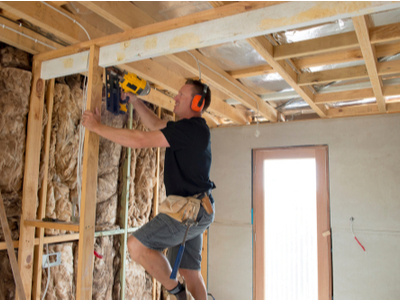
10 First Meeting Screw Ups that Cost Builders
Your first meeting with a prospective client sets up the success of a project. Get it right and you grow profits with happier jobs.
Get it wrong and you’re in for a world of pain…
Screw Up 1: No or Poor Qualification
If you’re prepared to meet with almost any prospect, you’re making your life harder than it needs to be.
Instead ask clients these ten questions to qualify whether they’re the right fit for your business.
Never visit a client site without qualifying the enquiry first.
Screw Up 2: Selling to The Client
Most builders tell us they hate selling. They feel awkward – even sleazy – when it comes to the first meeting with client prospects.
However, there’s a better way to help clients understand your expertise. Instead, focus on educating or helping them – Never sell!
See How to Take the Sleaze Out of Selling
Screw Up 3: Not Wearing Client Goggles
Think about what clients want from the meeting. Their objectives are very different to yours. They need to know if their project is buildable, if they can afford it, how long it will take and more.
Going into detail about building regulations or selling them on why you’re so great doesn’t answer their queries.
Try to put yourself in their shoes.
Screw Up 4: No Real Goals for the 1st Meeting
Many builders tell us in our research interviews their goal for the first meeting is to “win the client”.
But is that realistic? After all, Builders never leave the first client meeting with a signed construction contract.
Instead, use this template to focus on:
- Becoming the clients trusted expert
- Being the preferred builder
- Qualifying the client’s budget
Successfully winning projects is a process, not a song and dance.
“Builder’s Testimonial: ProCalc is one of the single biggest time/value levers you can pull in your business. A great product and a must for anyone looking to save time and provide clarity around costings early on in the process.”Sean Buchanan, Haven Homes
Screw Up 5: Not Charging for Your Time
Clients will gladly pay a small fee the first meeting if you give them a report they value.
So, provide the client with a ProCalc report (book free trial) and answer the clients questions (use this free template).
Charging a small fee positions you as the expert, helps the client begin to trust you and locks out your competitors.
Screw Up 6: Asking the Client’s Budget
When a builder asks for the client’s budget, clients can respond in several ways (none of them good), including:
- The client lies about their budget, hoping to keep some powder dry for later negotiating so they nominate a number that will never support the build
- They don’t know so they invent a number and you then must talk them up to a sensible budget point
- They think you’re playing games, wondering why you’re trying to talk about money so early, thereby undermining their trust in you
Instead, don’t ask, just tell.
Overtly putting a number on the table tells them you have a clear sense of the job and its value. You call the shots as you see them without the mind-games. Be bold, it helps clients follow your expert lead.
Give them a ProCalc report (book free trial) to build confidence and trust.
Screw Up 7: Showing Up Late, Untidy or Unorganised
Remembering the goals of the first meeting, showing up late, untidy or unorganised will spike your chances of winning the job.
If you’re going to be late, call the client to let them know.
If you struggle with this, get back on the projects and employ someone else to do it for you.
Screw Up 8: Not Differentiating Yourself
What makes you different from the next builder?
By specialising in a particular field, you can give yourself the edge so that clients are drawn to you first. See how here
Screw Up 9: No Meeting Structure (Agenda)
Free form meetings can often lead to inconsistent results for you.
Instead, create your own meeting routine – some builders even share beforehand what they want to discuss with the client in the first meeting.
Typically, a meeting routine might start with getting to know the client, understanding why they’re doing the project, addressing their specific requirements and concerns, responding and next steps.
Screw Up 10: Not Explaining Next Steps
Running the first meeting and responding the client query is great but telling the client what to do next is crucial.
Include a “Next Steps” section in your response to the client advising them what to do next to further engage your services. “Call this”, “email this” or “sign this” all explicitly tell the client how they can move forward.
Make it easy for them so they don’t have to think.
ProCalc helps builders eliminate the quotes they won’t win, book a free ProCalc trial here.
- Builders, Get Your Pricing Right Every-time – No More Under-Quoting
- Transform Your Building Business in 43 Mins (webinar)
- How (& Why) to Charge for First Client Meetings
- Take a Free Trial of ProCalc
- Stop All Free Client Meetings – Charge Upfront
- Want more tips like these? Checkout the Webinar: Work Smarter, Not Harder

Richard Armstrong is a former registered builder who recently interviewed hundreds of experienced Australian builders to identify how they best manage clients, budgets and profitability.










